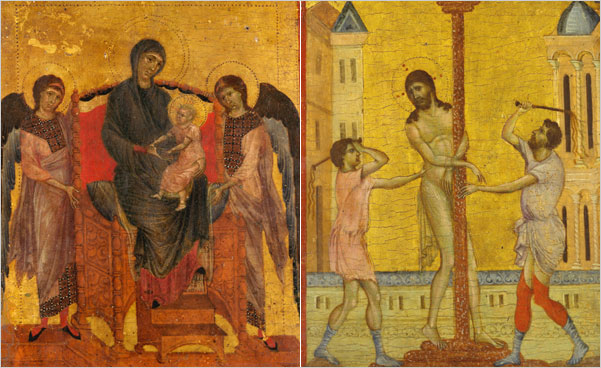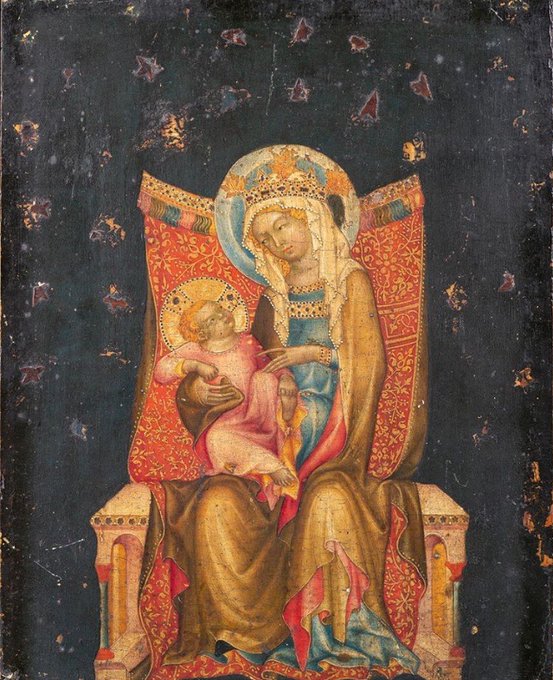 |
| Cimabue, Christ Mocked, c. 1280 |
This post has nothing to do with the art of medieval Hungary, but the details presented below is so interesting that I made the decision to produce a smaller submit about it. New begun circulating this week about the discovery of some spectacular medieval paintings, which experienced been hitherto unknown. The most famed discovery considerations a little panel attributed by Cimabue, which was uncovered hanging in the kitchen area of French woman. The portray will be auctioned by Acteon in Senlis on October 27, with an estimate of 4 to 6 million Euros.
The smaller panel depicts the Christ being Mocked and was determined as component of a dismembered compact altarpiece. Its reconstruction displays a diptych, with 4 modest panels on each wing. So considerably, two other paintings of the remaining wing have been acknowledged: the Virgin and Little one Enthroned with Two Angels at the Countrywide Gallery, London and the Flagellation of Christ at the Frick Assortment. The two panels have been exhibited alongside one another at the Frick Assortment in 2006. The recently identified portray dates from all over 1280, along with the dismembered former altarpiece.
 |
| The Cimabue panels in London and New York |
Also discovered in France, the second portray originates from Central Europe. It is a compact panel of the Virgin and Baby, attributed to just one of the most famed – but anonymous – masters of medieval Czech portray, the Learn of Vyšší Brod. Active in the middle of the 14th century, the master been given his name from the altarpiece now preserved in the National Gallery in Prague. The qualifications of the small panel has been repainted but could be cleaned and restored by a prospective purchaser (see the picture in the article in La Tribune l’Art). The portray will be made available for sale by Cortot & Associés in Dijon, on November 30, with an estimate of 400.000 to 600.000 Euros.
 |
| Learn of Vyšší Brod, The Virgin and Baby, c. 1350 |








